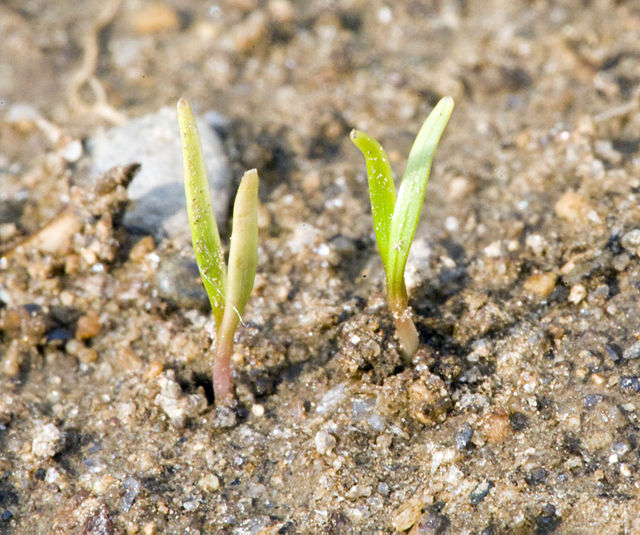The carrot is a root vegetable, typically orange in color, though heirloom variants including purple, black, red, white, and yellow cultivars exist, all of which are domesticated forms of the wild carrot, Daucus carota, native to Europe and Southwestern Asia. The plant probably originated in Persia and was originally cultivated for its leaves and seeds. The most commonly eaten part of the plant is the taproot, although the stems and leaves are also eaten. The domestic carrot has been selectively bred for its enlarged, more palatable, less woody-textured taproot.
Carrot
A depiction labeled "garden" carrot from the Juliana Anicia Codex, a 6th-century AD Constantinopolitan copy of Dioscorides' 1st-century Greek pharmacopoeia. The facing page states that "the root can be cooked and eaten."
Seedlings shortly after germination
Daucus carota umbel (inflorescence). Individual flowers are borne on undivided pedicels originating from a common node.
Root vegetables are underground plant parts eaten by humans as food. In agricultural and culinary terminology, the term applies to true roots such as taproots and tuberous roots as well as non-roots such as bulbs, corms, rhizomes, and stem tubers.
Carrot roots in various shapes and colors
Taro corms
Ginger rhizomes
Yam tubers








